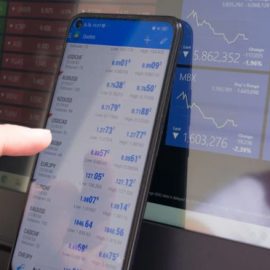

This article is an excerpt from the Shortform book guide to "The Simple Path to Wealth" by JL Collins. Shortform has the world's best summaries and analyses of books you should be reading.
Like this article? Sign up for a free trial here .
Are bonds a high-risk investment? What are the key risks associated with bond investing?
When you buy bonds, you are loaning your money to a company or government entity. Although bond investing is generally viewed as safer than stock investing, it has several risks.
In this article, we’ll take a quick look at the major bond investment risks you should know about.
Bond Investment: Explained
Each bond has an interest rate and term:
- Interest rate: This is the rate the issuer of the bond (the borrower) has agreed to pay the buyer (the lender—you or the fund you’ve invested in).
- Term: This is the time period the money is loaned for. Bonds are classified as short-, medium-, or long-term. For example, U.S. Treasury bonds issued by the federal government are classified as:
- Bills: 1-5 years
- Notes: 6-12 years
- Bonds: 12+ years
For example: A $1,000 bond offering 10% interest and a 10-year term, would pay $100 a year in interest, or $1,000 over the term of the bond.
Why You Need Bonds
While stocks and index funds are your most effective wealth-building tool, adding bonds to the mix provides several benefits:
- Bonds are less volatile than stocks and therefore, they smooth the ups and downs of your portfolio.
- They provide a little income by paying you interest, which is sometimes tax-free—municipal bonds for public works projects like airports are exempt from the federal income tax and from state taxes in the state in which they were issued. Also, U.S. Treasury bonds are exempt from state and local taxes.
- Bonds serve as a hedge against deflation. During periods of deflation or falling prices, when a bond is paid back, its purchasing power is greater than when you loaned it. The increase in value balances the losses deflation causes for stocks and other assets. In contrast, during inflationary periods when prices rise, your bonds have less value (they buy less) when paid back. But at the same time, your stocks increase in value and thus keep up with inflation.
Risks of Bonds
1) Default risk: The biggest risk is that the bond issuer will default and not pay you back. To help investors determine default risk, bond rating agencies (the primary ones are Standard & Poor’s Global Ratings, Moody’s, and Fitch Ratings) rate bonds based on creditworthiness. The scale ranges from AAA at the top to D.
The lower a bond’s rating, the higher the risk of default. Default risk is a key factor in the interest a bond pays. Poorly rated bonds are harder to sell, so the borrower or issuing agency offers higher interest to make them more attractive to buyers; investors get more interest when they assume more risk. All the bonds in VBTLX are highly rated, with none lower than Baa, which reduces the default risk.
2) Interest rate risk: Besides default, another risk of bonds is interest rate risk. This is only a factor if you decide to sell a bond before the maturity date (the end of its term). To sell it, you have to offer it to buyers in the so-called secondary market.
Whether you get more or less than you paid for the bond depends on how much interest rates have changed since you bought it. If they’ve gone up, the value of your bond will have decreased because investors won’t want to buy a bond that pays a lower rate. If interest rates have gone down, the value of your bond will have increased and you can get more than you paid for it (it’s a better deal than bonds currently being sold at lower rates). Either way, if you keep a bond until it matures, you’ll get what you paid for it as long as the borrower doesn’t default.
3) Term risk: The third risk factor for bonds is term risk. Along with default risk, the term of a bond factors into its interest rate. The longer a bond’s term, the more likely interest rates will change before it matures, and therefore, the greater the risk it will lose value if you want to sell it. So longer-term bonds pay higher interest than shorter-term bonds. The latter don’t tie up your money as long, so there’s less risk of interest rates changing.
Interest (yield) and terms for bonds can be graphed on a “yield curve.” The bigger the difference between short- and long-term bond interest rates, the steeper the curve. When short-term rates become higher than long-term rates, you get an inverted yield curve, which isn’t welcomed because inverted yield curves are typically followed by recessions.
4) Inflation risk: Inflation (when prices are rising) is one of the biggest bond investment risks. When you buy a bond (loan money) during an inflationary period, it will be worth less (buy less) when the borrower pays it back. Expected inflation also factors into the interest rate paid on a bond. As previously noted, long-term bonds, which are most likely to be affected by inflation, pay the highest interest. VBTLX reduces the inflation risk for investors because the bonds in the fund have a broad range of terms (the risk is spread out).
5) Other risks include:
- Credit downgrades: When rating agencies downgrade a company’s or agency’s bond rating due to financial problems, the bond’s value decreases.
- Callable bonds: Bond issuers can pay off callable bonds before the maturity date (meaning they give your money back and stop paying interest). They do this when interest rates are falling and they can borrow more cheaply by issuing new, lower-rate bonds. As previously explained, when rates fall, the value of your bond goes up—but that won’t benefit you if it’s recalled.
- Liquidity risk: If a company and its bonds fall out of favor with investors—for instance, by getting into legal trouble—this creates liquidity risk, which means that if you want to sell your bond, you’ll find few takers and will get a lower price.
The best way to buy bonds is to invest in a bond index fund. Bonds carry some risks, which we’ll explain in a moment, so most people don’t buy individual bonds except for U.S. Treasury Bonds.
Buying bonds via the VBTLX, Vanguard Total Bond Index Fund, mitigates the risks of owning individual bonds because the fund holds around 8,000 bonds, and a problem with one bond won’t have much impact. All of them are high-quality bonds and their terms vary over a broad range.

———End of Preview———
Like what you just read? Read the rest of the world's best book summary and analysis of JL Collins's "The Simple Path to Wealth" at Shortform .
Here's what you'll find in our full The Simple Path to Wealth summary :
- A simple road map to achieving financial independence and a secure retirement
- How to put your money to work for you as your “servant”
- Why you don't need a financial advisor to help you invest






